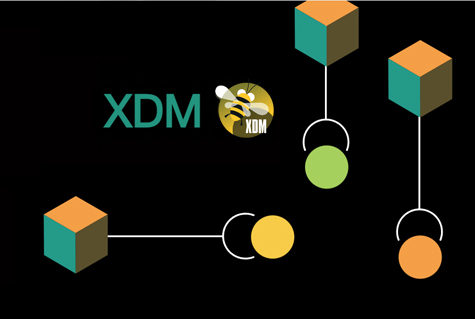In today’s digital era, data underpins almost every critical business decision. While many organizations view test data solely as a tool for verifying software functionality, effective test data management can drive efficiency, enhance customer experience, and spark innovation. This article examines the evolving role of test data and explains how XDM supports these strategic initiatives.
Understanding Test Data’s Evolving Role
Traditionally, test data was used to simulate real-world conditions so that QA teams could validate behavior and catch defects. However, as businesses become increasingly data driven, high-quality test data now plays a crucial role in accelerating development, reducing errors, and building stronger products when aligned with broader business objectives.
I) Superior Test Data Quality for AI and Machine Learning Systems
As companies invest in AI and machine learning, the importance of test data quality has never been higher. Algorithms rely on data that is accurate, complete, and relevant:
- Maximizing Algorithmic Accuracy: Reliable test data minimizes the risk of training models on flawed, incomplete, or biased information, ensuring that AI systems yield robust and accurate outcomes.
- Ensuring Cross-Application Compatibility: In complex IT ecosystems where data flows across multiple applications, harmonized and application-agnostic test data is essential for seamless integration and mitigating integration issues.
XDM tackles these challenges by automating the full lifecycle of test data preparation. It streamlines the retrieval, masking, and enrichment of production-like datasets, ensuring consistent, high-quality data across disparate systems. This not only reduces errors but also accelerates AI-based innovation.
II) Faster Time-to-Market: Efficient Test Data Management
In a competitive landscape, reducing time-to-market is vital. Efficient test data management supports rapid development and reliable releases:
- Streamlining Testing Processes: Automating the procurement and preparation of test data minimizes delays and allows testers to focus on validating functionality rather than searching for data.
- Minimizing Errors: High-quality, realistic test data reduces the chances of releasing software with undetected bugs, preventing costly fixes and reputational damage.
- Enabling Agile and DevOps: Readily available, compliant test data is the cornerstone of continuous testing, allowing teams to build, validate, and deploy software faster.
XDM accelerates these processes by delivering production-related, masked test data on demand, eliminating manual bottlenecks and supporting iterative development methodologies.
III) Better Customer Insights: Bridging Testing with Real-World Use Cases
Test data that closely mirrors actual usage yields insights that go beyond basic software validation:
- Simulating Real-World Scenarios: By analyzing anonymized production data, organizations can create test environments that reflect actual customer behavior, helping to identify potential usability issues.
- Optimizing User Experience: Realistic test scenarios allow teams to improve performance, from faster load times to more intuitive navigation, thereby enhancing overall customer satisfaction.
- Anticipating Future Trends: Testing with life-like data enables companies to simulate future conditions and adjust their strategies proactively.
XDM leverages anonymized production data to generate test scenarios that reflect genuine user activities, enabling teams to spot issues early and innovate with greater confidence.
IV) Compliance as a Competitive Advantage
With stringent regulations such as GDPR and CCPA, robust test data management is fundamental not only for legal compliance but also for trust-building and risk reduction:
- Building Customer Trust: Demonstrating commitment to data privacy enhances brand credibility and distinguishes a company in the market.
- Mitigating Risks: Automated masking, anonymization, and encryption mechanisms lower the risk of exposing sensitive data, thus avoiding hefty fines and reputational damage.
- Staying Ahead of Regulatory Changes: Proactively embedding compliance into test data management helps organizations adapt quickly to evolving requirements.
XDM automates compliance throughout the test data lifecycle, ensuring that sensitive information is securely masked and that regulatory standards are consistently met in non-production environments.
V) Elevating Test Data to a Strategic Level
To fully harness test data’s potential, organizations must integrate it into their business strategy:
- Establish a Clear Strategy: Define the requirements and formalize processes for generating and maintaining quality test data.
- Invest in Technology: Utilize automation tools for data procurement, masking, and analysis to safeguard data integrity while streamlining workflows.
- Foster Cross-Team Collaboration: Aligning QA, development, and compliance teams ensures that everyone values high-quality test data and works together toward common goals.
- Regularly Measure and Optimize: Tracking metrics like defect density and testing turnaround times enables continuous improvements in test data processes.
XDM provides a centralized, automated platform that simplifies data provisioning and masking, bolstering collaboration and delivering performance insights to keep test data a dynamic, value-adding asset.
Conclusion
Transforming test data from merely a technical necessity into a strategic asset is key to accelerating innovation, enhancing customer experiences, and ensuring regulatory compliance. With advanced solutions like XDM, organizations can overcome common challenges in test data management and position themselves for sustained growth and long-term success in a competitive digital landscape.


